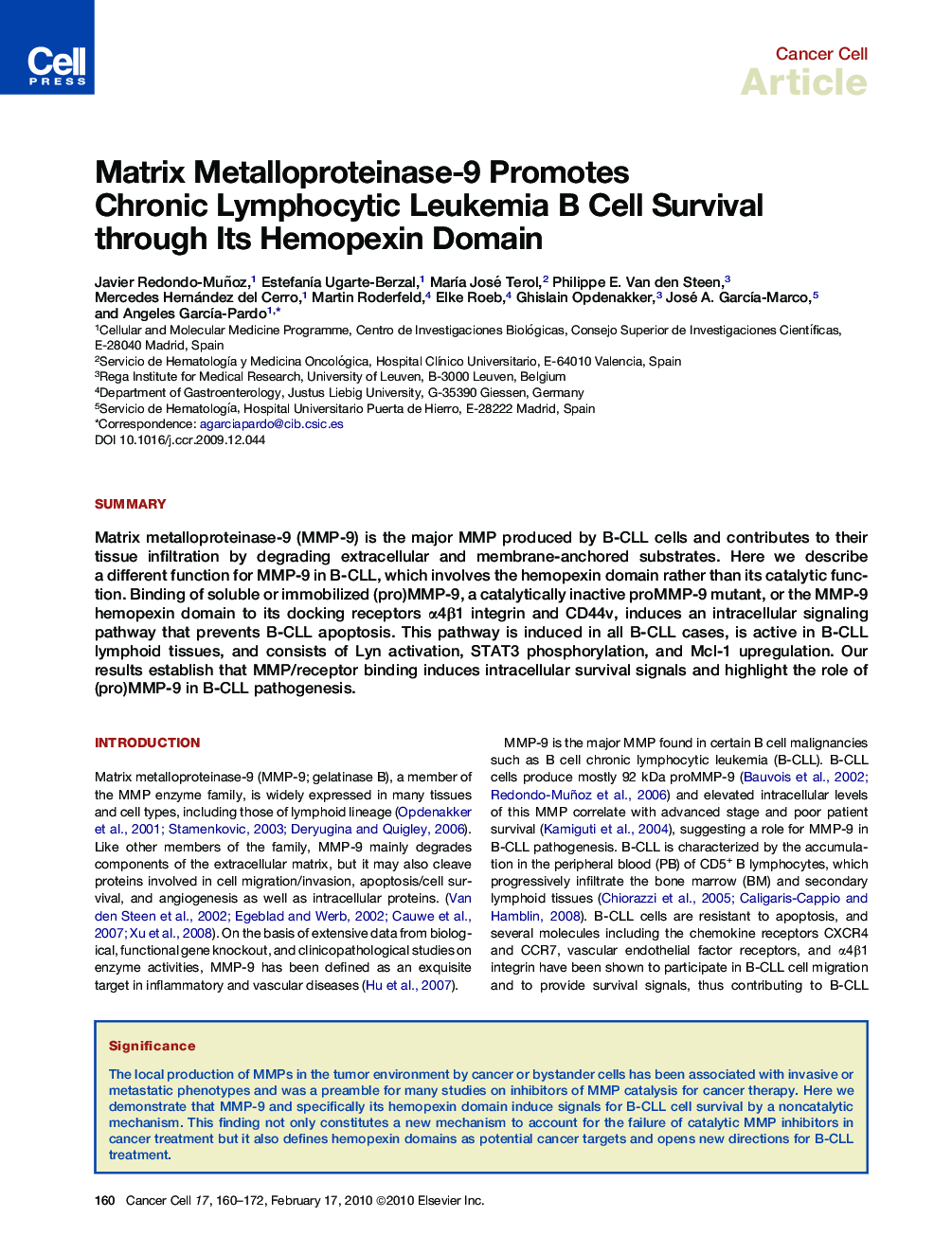| Article ID | Journal | Published Year | Pages | File Type |
|---|---|---|---|---|
| 2107699 | Cancer Cell | 2010 | 13 Pages |
SummaryMatrix metalloproteinase-9 (MMP-9) is the major MMP produced by B-CLL cells and contributes to their tissue infiltration by degrading extracellular and membrane-anchored substrates. Here we describe a different function for MMP-9 in B-CLL, which involves the hemopexin domain rather than its catalytic function. Binding of soluble or immobilized (pro)MMP-9, a catalytically inactive proMMP-9 mutant, or the MMP-9 hemopexin domain to its docking receptors α4β1 integrin and CD44v, induces an intracellular signaling pathway that prevents B-CLL apoptosis. This pathway is induced in all B-CLL cases, is active in B-CLL lymphoid tissues, and consists of Lyn activation, STAT3 phosphorylation, and Mcl-1 upregulation. Our results establish that MMP/receptor binding induces intracellular survival signals and highlight the role of (pro)MMP-9 in B-CLL pathogenesis.
► MMP-9/integrin binding induces cell survival signaling by a noncatalytic mechanism ► Lyn, STAT3, and Mcl-1 are key and specific components of the MMP-9 survival pathway ► B-CLL cells in niches have higher surface MMP-9 and viability compared to those in PB ► MMP-9 has an additional function contributing to B-CLL pathogenesis
